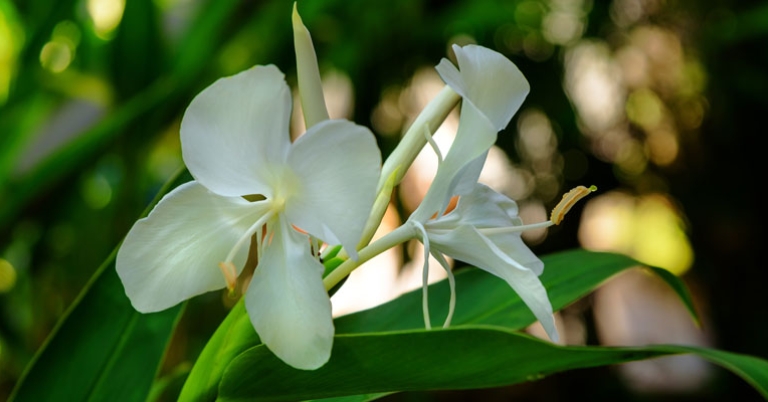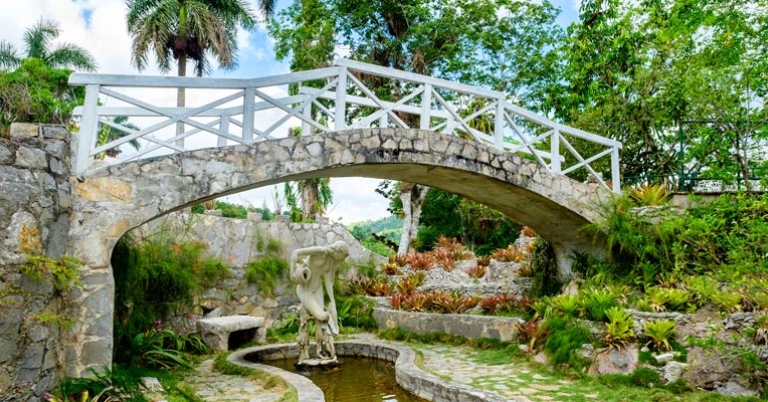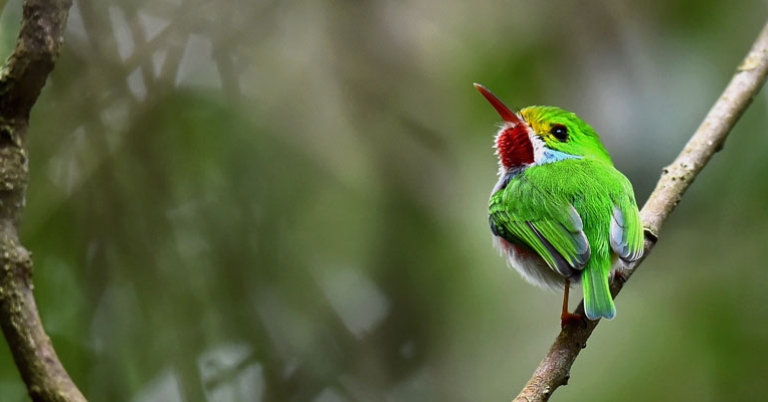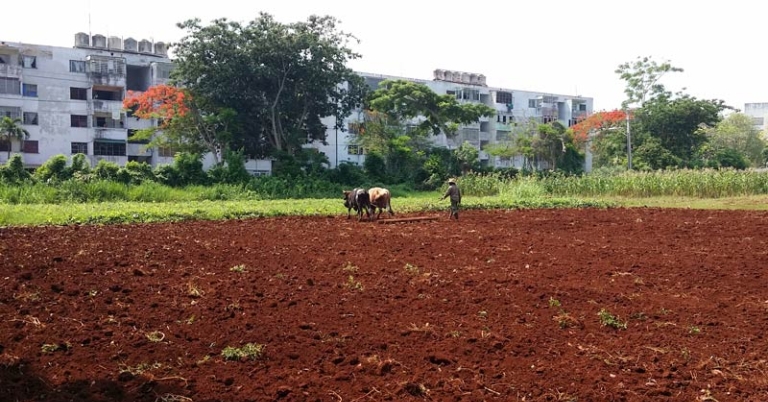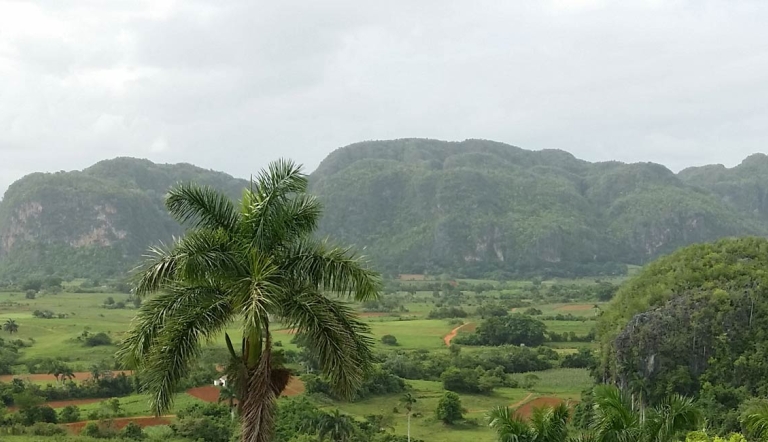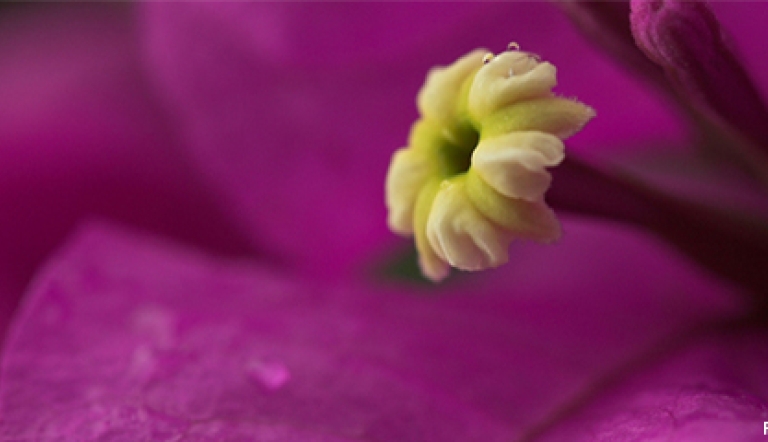Cuba | Agroecological Farming and Sustainability
About this trip
Over the course of centuries, Cuba’s culture has been shaped by its natural riches and complex history, which encompasses a blend of Indigenous, European, and African influences. Discover how these identities live and adapt to the Island’s different circumstances as you journey to the country’s capital and its heartland. Explore the farming havens within Havana that are striving to improve Cuba’s food systems, and then venture into the stunning landscapes of Viñales Valley, a UNESCO World Heritage Site. Most importantly, meet with local Cuban farmers, artists, conservationists, professors, and entrepreneurs to gain firsthand insight into their daily lives, the importance of sustainable practices in developing their livelihoods, and the ways Cuba’s natural and cultural history impact them.
Highlights
- Explore the many historical influences that have shaped Cuba as you explore Old Havana on foot.
- Learn about the island’s urban agricultural initiatives and organic farming through hands-on farming experiences at Alamar Organoponic Gardens and more.
- Enjoy delicious farm-to-table meals at several paladares and farms that serve as a model of agroecology on the island.
- Witness the advances in sustainable development being done by the Antonio Núñez Jiménez Foundation for Nature and Humanity (FANJ) through a permaculture garden.
- Visit Las Terrazas, a UNESCO Biosphere Reserve and self-sustained ecological community that began as a reforestation project and is now a model of sustainability and ecotourism and discover thousands of plant species, including more than a hundred native orchids, at the Soroa Orchidarium.
- Hike among the distinctive limestone formations known as mogotes and take a boat ride through an underground cave system in Viñales Valley.
$3,495
Land Cost
Group size
Book 14 travelers and 1 group
leader travels for free
$3,375
Land Cost
Group size
Book 18 travelers and 1 group
leader travels for free
What makes us different
Custom-tailored Trips
Service anytime
Cultural immersion
Behind the scenes tours
Support local communities
Sustainable travel
Daily Itinerary
Print ItineraryHavana
Day 1Havana
Day 2Havana
Day 3Havana
Day 4Viñales
Day 5Viñales
Day 6Vinales
Day 7Havana
Day 8Havana
Day 8Departure
Day 9Pricing
Print Pricing$3,495
Land Cost
Group size
Book 14 travelers and 1 group
leader travels for free
$3,375
Land Cost
Group size
Book 18 travelers and 1 group
leader travels for free
What's Included
- Accommodations with private bathrooms
- Activities and meals as mentioned in itinerary
- Full time guide for the duration of your program
- Arrival and departure transfers based on individual flight schedules
- Non alcoholic beverage with meals
- Bottled water or water refill station during transfers
- Carbon Offset
What's Not Included
- International flights
- Items of personal nature
- Tips
- Travel Insurance
Pricing Details
Prices are valid for travel from Jan 1 - Dec 30, 2025. Holiday surcharges may apply.
Travel Info
Print Travel InfoEntry & Exit Requirements
U.S. citizens need a valid passport to enter Cuba. Passports must be valid for at least six months after the date of entry and have at least two blank pages for entry/exit stamps.
All travelers must also have an electronic visa, which includes a health declaration form. The Cuban e-visa is valid for a single entry and allows the holder to stay in Cuba for 90 days. Your program includes the e-visa fee, and Holbrook will send you an email several weeks prior to departure with a link to your assigned e-visa number. The form may only be completed within 7 days of departure and must be completed before checking in for your flight to Cuba. (Note: This may be easier to do on a laptop or desktop rather than your smart phone.) Upon completion, you will receive an email with a PDF including a QR code for your specific e-visa. Please print or save this document to your phone for ease of submission when requested.
If you are not traveling with a U.S. passport or you are a Cuban-born person, please check with the Cuban Embassy for requirements based on your nationality. Also, be sure to have your required documents (passport, Cuban e-visa) for re-entry into the U.S.
Please note: The U.S. Department of Treasury, Department of Foreign Assets Control (OFAC) requires that all travelers to Cuba retain itineraries for at least 5 years.
Health Information
IMMUNIZATIONS
The Centers for Disease Control recommends that all travelers be up to date on routine vaccinations such as measles-mumps-rubella (MMR) vaccine, diphtheria-pertussis-tetanus vaccine, varicella (chicken pox) vaccine, and your yearly flu shot before every trip.
There are no vaccinations required for entry into Cuba, unless you are traveling from a country where yellow fever transmission is a risk, in which case proof of yellow fever vaccination is required. The CDC recommends vaccination against hepatitis A, hepatitis B, and typhoid for most unvaccinated travelers to Cuba.
Please consult your physician for additional information and recommendations based on your individual circumstances.
INSECT-BORNE ILLNESSES
Dengue fever and Zika virus are known to be present in Cuba. Travelers to Cuba should protect themselves against insect bites: Cover exposed skin with lightweight, long-sleeved shirts and pants, consider treating clothes with permethrin, and use an insect repellent containing an active ingredient like DEET or picaridin. Apply sunscreen first, followed by the repellent (preferably 20 minutes later). As a precaution, the CDC advises women who are pregnant to consider postponing travel to any area where Zika virus transmission is ongoing.
SUN EXPOSURE
The effects of the sun can be damaging to the eyes and skin. Spending time outdoors exposes you to the sun’s harmful ultraviolet (UV) rays, even on cloudy days. To protect yourself from the sun, use a broad spectrum sunscreen of at least SPF 15, protect skin with clothing, wear a wide-brimmed hat and sunglasses, and drink plenty of fluids.
Travelers’ Diarrhea
The CDC warns that travelers’ diarrhea is the most frequent health problem for travelers worldwide. To avoid contracting this, use bottled water, which is about $1.50 to $2 for a small bottle purchased in your private home or casa particular and some restaurants. Water costs much less in stores.
Avoid ice and uncooked vegetables or peeled fruit. When in doubt, ask your trip leader. If you contract diarrhea, it is very important to drink large quantities of purified water with rehydration salts and consult your doctor for appropriate medication.
Resources
Print ResourcesPacking Recommendations
Everyone has personal preferences when it comes to packing; for this reason, the information below is offered as a general guide and not a definitive list. You know yourself best: Use your discretion and pack what you think will serve you, based on your personal preferences and specific itinerary.
You may find many of the items below in our Gear Store.
CLOTHING
Casual, comfortable clothing is suitable for most activities. You may wish to bring a slightly nicer outfit or two (eg sundress, polo shirt) if your itinerary includes dinners out or more formal activities.
Bring enough clothing suitable for the length of your program. If you plan to hand-wash items, remember that humidity may delay drying time.
Pack clothing that can be worn in layers to adapt to weather changes throughout the day. Clothing that wicks away moisture and dries quickly is recommended.
- A combination of short-sleeved and lightweight, long-sleeved shirts for sun and mosquito protection
- Shorts
- Lightweight, quick-drying long pants for sun and mosquito protection
- Undergarments
- Sleepwear
- Lightweight jacket or sweater/sweatshirt
- 1-2 bathing suit(s) for the beach, if applicable
- Socks – Bring extra pairs. For hikes, long socks that you can tuck your pant legs into are recommended to deter ticks.
- Shoes – Consider your specific itinerary when choosing footwear. For most programs, you’ll likely want at least one pair of comfortable, closed-toe walking or hiking shoes suitable for forest hikes and walking over cobblestones or other uneven terrain. Sturdier hiking boots may be appropriate for more rugged itineraries. In addition, many participants opt for a pair of sturdy sport-strap sandals (e.g. Keens, Tevas, or similar) and/or casual flip-flops or sandals. If you’re visiting the beach, you may also want a pair of aqua socks, reef walkers, or water shoes.
- Lightweight rain jacket, hooded poncho, and/or windbreaker
- Visor or wide-brimmed sun hat
- Bandana, scarf, or neck gaiter to protect against insects
Personal Toiletries
Pack toiletries based on your personal preferences and habits. Below are just a few recommendations to keep in mind.
- Shampoo, conditioner, lotion, deodorant/antiperspirant , etc. – If possible, avoid strong fragrances if you are sensitive to insect bites.
- Soap and washcloth or a small, quick-drying microfiber towel – Washcloths are not standard in all accommodations. If you normally use a washcloth, you may wish to bring one from home.
- Hairbrush, comb, hair ties, shower cap
- Toothbrush and toothpaste
- Razor
- Ear plugs, especially if you are a light sleeper
- Personal hygiene products
- Insect repellent with DEET or picaridin (see note below about treating clothing with permethrin)
- Sunscreen and lip balm with SPF – If you’ll be in the ocean, we recommend reef-safe sunscreen.
- Aloe vera gel
- A travel pack of tissues – also useful as napkins or toilet paper if needed
- Small towel – bath mats are not always provided in accommodations
In addition to your personal toiletries, it is useful to pack a small medical kit, which you can easily prepare. Helpful items might include: bandages, antihistamine, a pain reliever, motion sickness medication, anti-diarrhea medicine, individually wrapped pre-moistened towelettes and/or hand sanitizer, antibiotic ointment, anti-fungal cream, moleskin for blisters, eye drops, tweezers, a mini sewing kit, and an extra pair of disposable contact lenses or eyeglasses if you wear them.
Days before you leave home, you may wish to consider spraying any clothing, socks, and shoes that will be worn in lowland, tropical sites with permethrin, an anti-parasite medication, to repel irritating pests and prevent the spread of disease. A recommended brand is Sawyer. Carefully read all instructions before use. Please note permethrin is highly toxic to cats and fish, and some aerosol products may be harmful to birds. Side effects may include minor itching, burning, or redness. You may want to use a laundry marker to label and keep track of which socks are permethrinized. Only one application per item is necessary; permethrin on treated clothes remains effective through several washings. Permethrin should NOT be applied directly to skin.
Miscellaneous
Remember to pack valuables such as your passport, cash/credit cards, and medications in your carry-on luggage.
- Passport, visa, and photocopies of all travel documentation
- Personal insurance card and travel insurance information
- Money – Cash; small bills in good condition are recommended. Please note: Credit or debit cards that are drawn against accounts in the United States cannot be used in Cuba. Therefore, it is important to estimate the amount of cash that is necessary for travel.
- Prescription medicines (if applicable), with a copy of the prescription
- Yellow fever certificate (if required; only if arriving from a country where yellow fever transmission is a risk)
- Sunglasses with strap
- Small day pack for hikes and excursions
- Flashlight and/or head lamp
- Travel alarm clock or inexpensive waterproof wristwatch with alarm – Not all hotels provide alarm clocks.
- A pocket calculator or phone to assist with conversions and currency exchange
- Binoculars with lens cleaner
- Camera and related equipment, such as charger, lenses, and extra memory cards
- Reusable water bottle
- Non-perishable snacks
- Pocket-knife or multipurpose tool - Pack in your checked luggage
- Zip-top style bags – useful for packing toiletries, sorting clothing, storing damp or muddy shoes, or as a dry bag for protecting electronics
- Notepad or travel journal and pen
- Music or reading material for down time, long bus drives, or on the airplane, and a portable bright light to read by
- Collapsible walking stick with rubber tip
- A small quantity of laundry detergent if you’ll be washing clothing by hand
- Travel-size umbrella – Some people find this unwieldy to carry, while others find it offers better protection than a rain jacket alone.
- Money belt
- Chargers for electronics
- Converters and plug adapters for electronics

Questions
For more information, contact us at 800-451-7111 or email travel@holbrooktravel.com.


